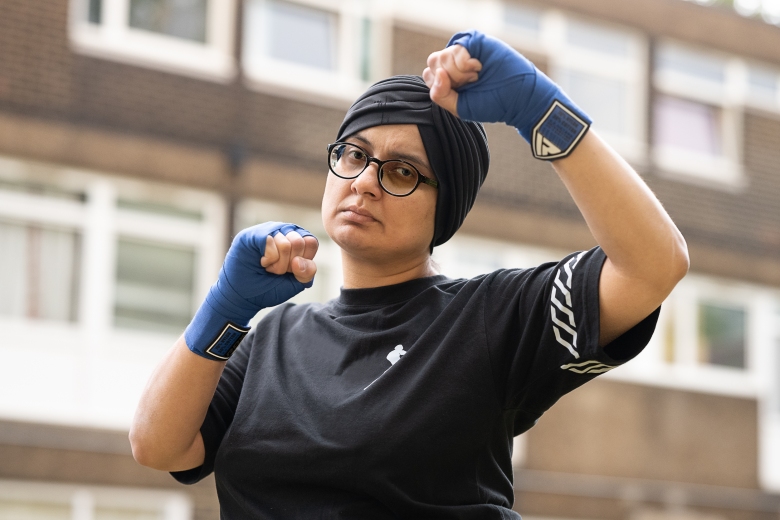Deaf photographer Stephen Iliffe captures the ‘rainbow-coloured mosaic’ of deaf intersectionality in all its stunning, striking vibrancy.
In viewing a community as a collective, it becomes a little harder to appreciate its beautiful intricacies. When you investigate deeper, you witness the incredible individuals that come together to form the wider demographic, whether that be the deaf community, Black community, LGBTQ+ community, or more. You see each colourful personality that forms the bigger picture – a mosaic, if you will.
Currently standing at 28 images, Iliffe’s gallery features a wide range of deaf individuals, their involvement in no way tokenistic. With each photo accompanied by a short, journalistic caption, it’s apparent that the models are selected for their stories first and foremost – experiences shaped by their own unique identity. Ghislane Seddiki’s work leading a project to translate the Qur’an into British Sign Language (BSL) is one of the most interesting to feature in the collection.

Such an approach isn’t surprising when Iliffe writes of his time at deaf events. “As I push open the swing doors to one London’s ‘deaf pub’ gatherings, I’m as likely to be pulled into sign language gossip by a friend of Lithuanian or Sri Lankan descent as I am by a cockney or a Scot,” he says. “Joining the next circle of deafies, I might sign to a chief executive or bricklayer, doctor or office cleaner.”
“At times, it seems as if deaf people mingle with each other across demographic boundaries more freely than hearing people do,” he concludes. Iliffe’s reasoning, he goes on to reveal, comes down to the fact that deaf children emerge in various social, ethnic and economic backgrounds. Whether such a claim is true or not, one will never know for certain, but the mingling he describes could not be clearer in images which truly reflect the personality of their subject.
It is, of course, the hallmark of a talented photographer: to establish rapport, to explore and execute an idea, to seize spontaneity.
There is something to be said in Martin climbing onto a shelter with an idea for a great shot, in Nadia striking a more playful pose for her portrait, and in Tyron displaying his trademark smile with ease (one which I, myself, have witnessed). First and foremost, it demonstrates the ‘mingling’ which Iliffe described previously.

If the idea presented isn’t immediately obvious, then the creativity lies in the metaphorical. When deaf asylum seeker Lawand Hamadamin – who made headlines in 2017 when the Government tried to deport his family to Germany – hangs from a climbing frame in a playground, it’s used as an analogy to describe his world being turned ‘upside down’ as a result of his journey to living in the UK. Meanwhile, emphasis on Peter Brown’s muddied hands is not just a nod to his passion for mudlarking, but also his background in Deaf history, of which sign language (which of course, relies on hand shapes) forms a pretty integral part.
While Stephen plans to expand the exhibition over the next year, the initial collection nonetheless concludes with a hopeful look to the future. We see a future activist in ‘Poppy’ (not her real name), attending a protest in Parliament Square with Emily Pankhurst as the backdrop. In an astonishing final image, the gleaming eyes of Harriet stare at us with wonder, intrigue, and eagerness. In documenting the rich diversity of the Deaf community, Iliffe illuminates untold stories, and anticipates the anecdotes of the future.
The full gallery is available to view on the official Deaf Mosaic website.
Photos: Courtesy of Stephen Iliffe.


This sounds awesome! We need more art showcasing the beauty and diversity of the disabled community.
LikeLike
It really is. I hope you’ve taken a look, if you haven’t already! As for more representative art, I completely agree. When there’s a tendency for representation to cause a ‘one size fits all’ perception of an identity/community, focussing on intersectionality and diversity is so important.
LikeLike
Yes, exactly. If you only focus on the white male members of a community, you aren’t truly including the community.
LikeLiked by 1 person